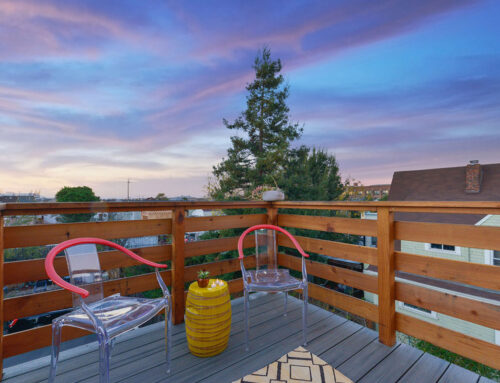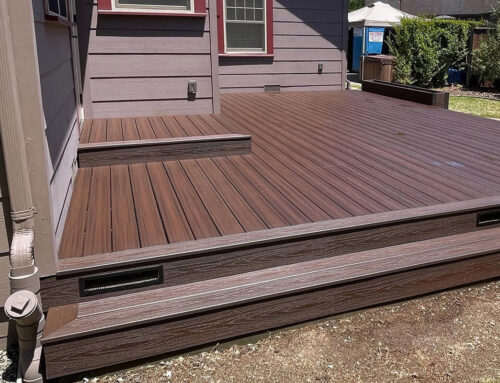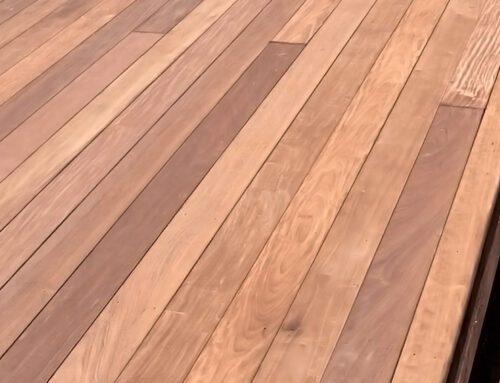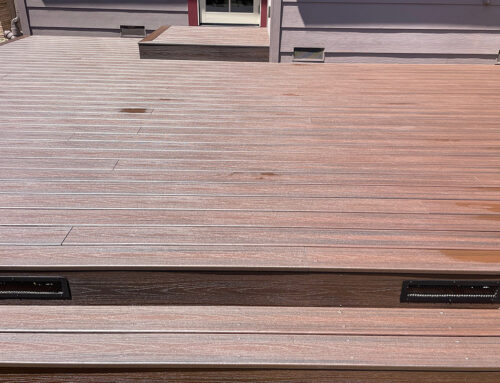Even when perfectly cared for, wood will cup slightly. However, significant cupping can be a problem for deck owners. Deck boards that have cupped downwards, with their center sunken and edges raised, will now collect more water and hasten the demise of the deck. Significant cupping in either direction can also create an uneven surface and tripping hazard, particularly on deck stairs.
What is Board Cupping?
Board cupping is a result of the way that wood boards are cut and their natural properties of absorbing water. On flat-sawn wood (but not quarter or strait-sawn), there is one side of the long edge of the board that was closer to the center of the tree (this is called the pith side). The other side was closer to the bark. The wood cells on the bark side absorb less water and swell less. The wood cells on the pith side absorb more and swell more. As the pith side expands more, the bark side curves in. This creates cupping.
While cupping is somewhat a natural result of the way we cut boards, it is made much more significant when there is uneven moisture conditions on the two sides of the board. Material choices and installation techniques can eliminate all but the most minor cupping.
Choosing Materials
By choosing the right materials, you can avoid any cupping issues in the first place. Composite wood is the best option if all you want from your deck is greater durability and no cupping issues. Composite materials are still made of wood but absorb significantly less water thanks to the other materials in the boards. Also, as they lack a real wood grain, these boards don’t curve in the predictable ways that real wood does. Composite can still be damaged by water absorption but shouldn’t cup.
If you do want real wood, you should choose high-quality hardwood boards and ensure they were properly dried (as much as possible) before installation. Choosing wood that is quarter or strait-sawn will also reduce warping and eliminate cupping, but boards cut like this are rare because they are more expensive to make. When choosing flat-sawn wood, choose those planks with shorter grain lines. Or, choose the planks with the shortest grain lines for the areas of your deck that are most likely to have water issues.
Installation Choices
Installing the deck properly will minimize cupping. Essentially, the underside of the deck will be moister, so place your boards with the bark side down. This side absorbs less water, which will then help it stay balanced with the drier side on top.
Ensuring proper spacing and ventilation in the deck will also help keep that underside dry. Design the deck with proper clearance from the ground and use gravel beneath it to help keep it dry. Space the deck boards properly and allow the underside to ventilate.
Fix Existing Cupping
What if your existing boards are already cupping? Homeowners can flip the boards, sand them, or replace them to smooth out the deck surface.






